Tom G. Wolf / July 16, 2019
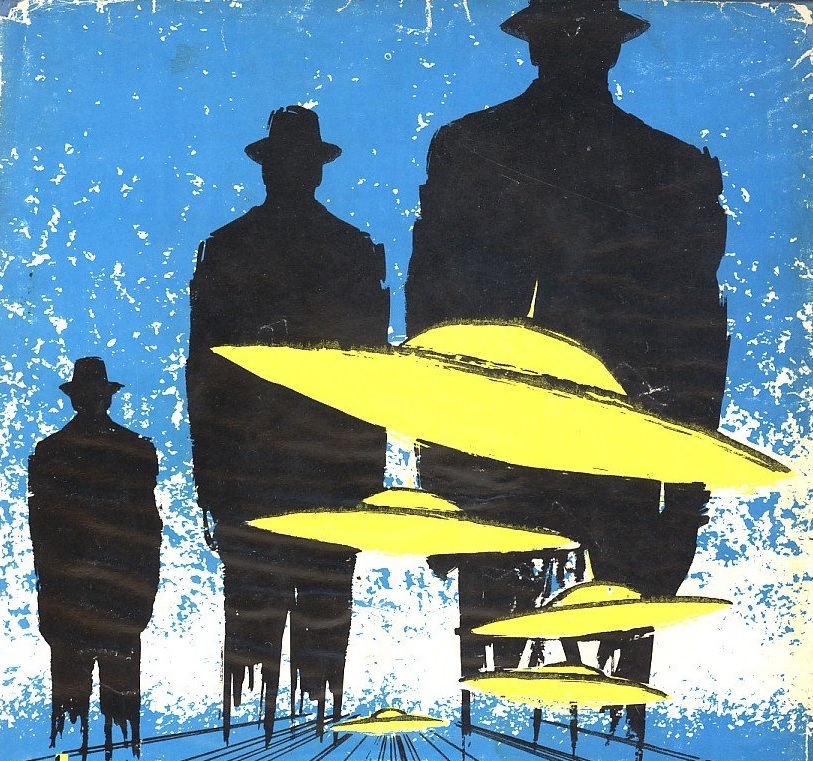 “The Men in Black. One of the most perplexing mysteries we’ve ever come across. Cloaked in secrecy, they show up without warning, state their business, then vanish as quickly as they appeared. No-one knows who the Men in Black are, where they come from or who they represent. There’s no real proof that they even exist. But hundreds of eyewitness accounts give us good cause to investigate this most unusual phenomenon.”
“The Men in Black. One of the most perplexing mysteries we’ve ever come across. Cloaked in secrecy, they show up without warning, state their business, then vanish as quickly as they appeared. No-one knows who the Men in Black are, where they come from or who they represent. There’s no real proof that they even exist. But hundreds of eyewitness accounts give us good cause to investigate this most unusual phenomenon.”
—Robert Stack, Unsolved Mysteries, 1997
Lurking within the mire of modern UFO lore are the Men in Black—black-suited, mysterious agents of uncertain origin who reportedly intimidate witnesses and abductees into silence. Their presence has been controversial within the UFO community, and there is no doubt that they have had a significant impact in wider pop culture. But where did they come from? To fully trace their origins, we have to look back to the early days of the UFO contactees.
UFOs: Age of Utopia
Science fiction has toyed with the idea of hostile alien invasion since the inception of the genre, dominating pulp fiction and popular perception of the subject. But a glance through much of the early UFO contactee literature that followed in the decade after Kenneth Arnold’s 1947 sighting suggests a far less concerning view of matters. Larger-than-life characters such as Buck Nelson, Daniel Fry, Elizabeth Klarer, the Mitchell Sisters, and George Adamski regaled readers around the world with tales of personal discussions with friendly, humanoid extraterrestrials, and trips across the Solar System in flying saucers.
The contactee movement is multi-faceted, worthy of an article or two in its own right. Yet there are numerous shared traits in the messages shared by its proponents; depending on the contactee, these messages might be framed in religious or secular terms, but each remained fairly similar:
- Earth has been under observation (sometimes for centuries or millennia) by a benevolent group (or groups) of aliens.
- The level of violence humans have perpetuated against one another is disturbing to the aliens, and is preventing humans from reaching their full potential as a species.
- Nuclear and atomic power must be abandoned, due to the danger and violence associated with them.
- Humans must learn to live together as one family, before we destroy ourselves.
- Occasionally, there would be mentions of other, more malign aliens who worked to encourage humanity’s worst traits.
It would be fair to say that the scientific basis of many contactee claims came under immediate scrutiny. Yet in a time before space exploration as we know it today had begun, the contactees reached a wide audience, many taking them with some degree of seriousness. Just a few years removed from Kenneth Arnold’s famous sighting, the next logical step would have seemed to be alien-human contact. Many among the contactee movement hoped that the newly arriving aliens would usher in a golden age, a utopia that would see the end of petty human conflicts and (finally) bring about peace on earth. As of 2019, they remain disappointed.
* * *
There are some broad strokes that illustrate why the contactees resonated with the wider public. World War II had only recently ended, and America was enjoying a post-war boom. Yet the scars remained, and fear of nuclear annihilation loomed large. Paranoia was rampant as politicians like Senator Joseph McCarthy began searching for Reds under the bed. And it can’t be discounted that the desire for and expression of utopia will always find an audience.
More than half a century removed from this wave of contactees, it’s tempting to see their stories of lampshade-shaped UFOs and handsome spacemen (and spacewomen) simply as a narrative vehicle to communicate semi-progressive political values and anti-nuclear sentiments. Like any effective new religious or social movement, the contactees were able to leverage this zeitgeist, addressing the contemporary concerns of potential adherents and using it to spread a more palatable message.
And as with any similar movement, there was a spectrum of sincerity; many appear to have been serious about the positions they held about the nature of alien life. Others were no doubt frauds, eager to capitalize on a new trend (Adamski in particular had served in a variety of “spiritual leadership” positions prior to his alleged alien encounter), while others still were simply deluded and took gullible listeners along for the ride. It could be argued that the contactees helped set the stage for the New Age movement, which would bloom throughout the 1970s and 1980s.
Contactees are often seen as representing a certain innocent charm around the subject of UFOs and extraterrestrial life, especially given the toxic sludge of conspiracy theories that frequently contaminate the UFO community in 2019. Yet this would be an overly simplistic view. Even during those seemingly milder times, serpents lurked within Eden, and they would eventually cast their long shadows over the whole of the wider UFO community—the sinister Men in Black.
The Real Men in Black?
“This character was as bald as an egg. He didn’t even have eyebrows or eyelashes. It looked like he had smooth, plastic skin—like a doll except that it was a dead-white color… His lips were a brilliant ruby red, and he spoke in an expressionless, monotone, scanning speech. He constructed no phrases and sentences—just a sequence of words evenly spaced. His voice was completely passive with no inflection or intonation, as if you were hearing it from a machine that could talk.”
—Dr Herbert Hopkins, describing his 1976 encounter with a Man in Black
Today, the Men in Black are probably best-known to the general public via the 1997 sci-fi action-comedy movie Men in Black and its sequels. Based on an obscure early ‘90s comic created by Lowell Cunningham, the movie grossed more than half a billion dollars at the box office, sold a ton of merchandise, and launched Will Smith into superstardom. The movies (2019’s Men in Black: International is the latest) paint the Men in Black as part of a benevolent organization separate from the government: they keep a discreet eye on alien activity around earth and protect humanity against extraterrestrial threats. But the stories of the real-life Men in Black are rather different: they represent a menacing, frightening presence, often with supernatural undertones. Witnesses are frequently left terrified, often unwilling to disclose their experiences until several years later—if ever. But who—or what—are the real Men in Black?
The typical Men in Black narrative involves an individual (often a UFO investigator) who is approached shortly after having a UFO-related encounter. Their approach may be presaged by a phone call or more cryptic means of communication, frequently with a warning to cease investigation. When they turn up in person, they’re inevitably dressed in black suits and hats. Appearing both singly and in groups, Men in Black may or may not offer some kind of official identification; if they do, the names given will be false, attached to organizations that do not actually exist. Female MIB have been reported, though they are much rarer.
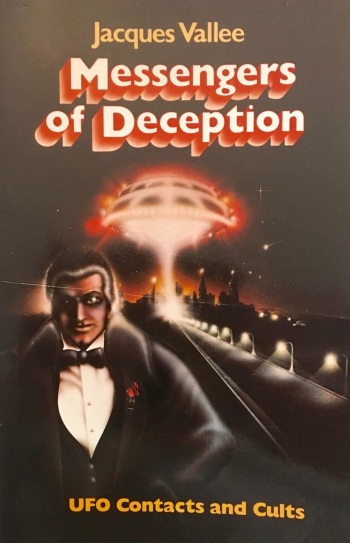 The vehicles they drive, the style of the suits they wear, and the speech they use may be anachronistic with the era in which they appear. For example, Robert Richardson’s 1967 encounter described the Men in Black as arriving in a 1953 black Cadillac. Their arrival is often at an unusual time of day—when someone else who could serve as an additional witness might be out. However, the person encountering MIB often will not realize the strangeness of the timing of the visit until much later.
The vehicles they drive, the style of the suits they wear, and the speech they use may be anachronistic with the era in which they appear. For example, Robert Richardson’s 1967 encounter described the Men in Black as arriving in a 1953 black Cadillac. Their arrival is often at an unusual time of day—when someone else who could serve as an additional witness might be out. However, the person encountering MIB often will not realize the strangeness of the timing of the visit until much later.
Questions are usually asked about the individual’s involvement in UFOs, and MIB appear to be aware of personal details or information surrounding the case that is not public knowledge. Yet their ultimate purpose seems to be straightforward—the Men in Black will sternly suggest that the witness or investigator forget about their encounter or investigation. Sometimes violence is threatened or implied, though there do not appear to be any cases in which violence was inflicted. Key materials are sometimes confiscated, which can cause serious issues for any experiencer or investigator seeking to make a case for the reality of their UFO encounter. Afterwards, the Men in Black vanish abruptly, faster than seems humanly possible. No trace of their presence can be found, leaving witnesses baffled and frequently deeply uncomfortable.
Their exact nature remains uncertain, though an element of supernatural power or high strangeness accompanies many of their appearances. Reports also often emphasize their inhuman appearance and/or behavior: ill-fitting clothes, a lack of facial features such as lips, improperly applied makeup, a monotone voice. In some cases, it’s possible to read a racist interpretation of their appearance into the description. Though today Men in Black are most commonly depicted as inhumanly pale, some cases have emphasized features such as dark skin, “exotic” features, or “oriental” eyes. Such descriptions arguably embody a “white American chauvinism,” as noted on the Stuff to Blow Your Mind podcast. This is less prevalent in more recent reports and discussion of the Men in Black.
As it stands at time of writing, hoaxers and human government agents are two of the most popular suggestions for the Men in Black—and, to be fair, these are the explanations best supported by most of the evidence. The odd, anachronistic or supernatural behaviors exhibited naturally led to the assumption that many of these Men in Black are actually aliens, robots or inhuman beings in disguise. Time-travellers have been thrown into the mix. Numerous authors have suggested comparisons with the tulpas of Theosophy, while folkorist Dr. Peter M. Rocjewicz draws comparisons with folk-tales of demons and the devil. Jacques Vallee espouses a related viewpoint, attributing the UFOs and Men in Black alike to a syncretic mix of religious experience, alleged faerie encounters, and psychic phenomena. Writing to cryptozoologist Loren Coleman in 2012, Valle noted that one of his major contributions to Men in Black imagery had come via the cover of his 1979 book, Messengers of Deception: UFO Contacts and Cults:
At the time, I instructed the artist to show a human walking deliberately away from a hovering saucer rather than running away or cowering in front of it. Most readers at the time didn’t like the image, too disturbing and not in line with expectations about flying saucers: the occupants shouldn’t be human. I think what was disturbing in the ‘Messengers’ image was the implication that some humans knew what the saucers were, and [the ‘others’] were walking quietly into our world.
But while their nature appears to be as elusive as the UFO phenomenon that spawned them, we have a clearer picture of their entrance into modern pop culture.
The Men in Black and Maury Island
Writing in Sightings: UFOs (1997), Susan Michaels dates the Men in Black’s “first appearance” to June 1947, an extension of the Maury Island incident. Though this early encounter didn’t have all of the tropes codified, a number of now-common elements are already present. While sailing off the coast of Maury Island in Washington, Harold A. Dahl and Fred L. Crisman claimed to have witnessed a “UFO rendezvous” of six doughnut-shaped objects. As part of this display, Dahl and Crisman claimed that one of the UFOs was ejecting a slag-like material, some of which hit their boat. The two men diligently collected some of this material in the wake of the event, hoping it would serve as proof of their experience.
Given the incident’s proximity to Kenneth Arnold’s famous sighting, it’s likely that the claim would have drawn significant attention anyway. Not to mention that physical evidence of UFO activity would have solidified the story in the minds of the public and perhaps even the scientific community. But there was still more to the story, and Arnold himself would play a role in it. After hearing of the incident, it seems he took the whole thing at face value and encouraged some of his Intelligence buddies in the Air Force to investigate further. They dutifully flew into town, only to discover that the much-vaunted alien slag was simply aluminum—though they didn’t tell Arnold, possibly to spare his feelings.
This might have been a fairly routine UFO investigation for the time, save for two key details. The first (alleged) incident is that after speaking to Arnold, a mysterious stranger wearing a black suit and driving a black sedan approached Dahl, warning him not to speak any more about the case. The second (verifiable) incident is that while flying back home, the plane carrying Arnold’s Air Force contacts crashed unexpectedly, killing both of them. It was an unfortunate accident, but both of these events in tandem naturally inspired whispers of conspiracy. One can only imagine the terror that Dahl and Crisman experienced.
Dahl did receive another visit in a more official capacity a couple of months later. This time it was from FBI agents who wanted to know more about the two men’s alleged UFO encounter. The agents collected a number of variants of the story and, in fairly short order, concluded that the matter was a hoax, noting that the pair seemed to be interested in shopping their story to a number of publications.
But by this time, a legend had already been born, with the shadowy Men In Black establishing themselves as key characters. And as with any good conspiracy, there was no neat ending—in the 1960s, Crisman would be investigated for a possible connection to JFK’s assassination. “Whether or not Dahl’s original UFO story was a hoax,” Michaels notes, “the fallout from his disclosures opened a brand-new chapter in the UFO experience.”
Gray Barker, Man Behind the Myth?
“We have been watching you and your activities. Please be advised to discontinue delving into the mysteries of the universe. We will make an appearance if you disobey.”
—An alleged verbal warning to UFO researcher Albert K. Bender, 1952
Yet the myth wouldn’t really explode until almost a full decade later, in large part due to the efforts of author Gray Barker. In 1956 he published They Knew Too Much About Flying Saucers—a book that served as something of a counterpoint to the utopian vision propounded by the likes of Adamski. Barker’s book suggested conspiracy, instead—tales of UFO witnesses being hushed into silence sat alongside “evidence” of the existence of the underground civilization of Lemuria and cryptids like the Flatwoods Monster.
But most notably for modern readers, the book also included the story of Albert K. Bender, a Bridgeport, Connecticut-based eccentric and UFO investigator, who headed up an organization known as the International Flying Saucer Bureau (IFSB). The organization attracted support from around the world, spanning about 600 members at one point. The IFSB also published a quarterly journal known as Space Review, which, along with Bender’s other UFO-related activities, appears to have attracted the attention of the Men in Black in 1952.
According to Barker’s account, a variety of strange phenomena preceded Bender’s first reported encounter: sulphurous smells filling his apartment, strange phone calls, health problems, a sensation of being watched, and experiences with hypnosis and levitation. Bender also reported seeing a man with glowing eyes in a movie theater. A telepathy-based experiment to make contact, involving other IFSB members, did not lessen the problem, either—yellow mist began to pool in his attic, and telepathic warnings to cease his investigative efforts followed.
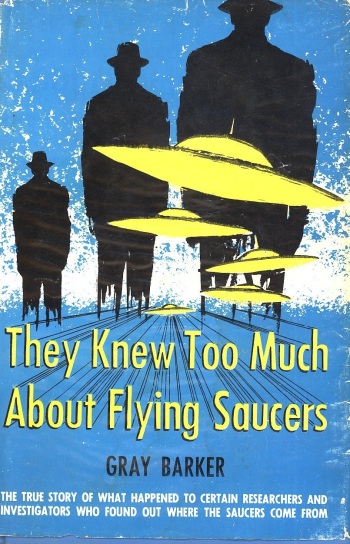 The first “true” encounter allegedly came in July 1953, when three men visited him at home. Dressed in black suits, Bender described them as looking like “clergymen but wore hats similar to the Homburg style.” Communicating with him telepathically, they told him in no uncertain terms to “Stop publishing” and to cease any UFO-related work. After confiscating a variety of copies of Space Review, they again departed, leaving a trail of yellow smoke.
The first “true” encounter allegedly came in July 1953, when three men visited him at home. Dressed in black suits, Bender described them as looking like “clergymen but wore hats similar to the Homburg style.” Communicating with him telepathically, they told him in no uncertain terms to “Stop publishing” and to cease any UFO-related work. After confiscating a variety of copies of Space Review, they again departed, leaving a trail of yellow smoke.
Apparently terrified by these events, Bender eventually complied with his visitors’ requests. The IFSB was shut down and Space Review ceased publication, with the final issue claiming that the truth about UFOs was no longer hidden—though he did not reveal it himself at the time.
However, the fear would not last forever; in 1962, Bender would publish a book with Barker called Flying Saucers and the Three Men, which would expand on the tale originally included in They Knew Too Much About Flying Saucers. A number of other claimed encounters were detailed, with one involving alien creatures born from eggs, and another that mentioned a trip to Antarctica.
Dr. Peter M. Rocjewicz—who himself allegedly encountered the Men in Black—has posited that this turn of events may have been a “psychological drama resulting from a combination of his bizarre interests and the stress his close friends placed on him to reveal his secret.” However, Rocjewicz does not go so far as to suggest that all Men in Black cases are self-fiction; Bender was known to be fascinated by the occult and paranormal well before the foundation of the IFSB, which may have exercised an influence on his interpretation of events. “The challenge to this view as a general interpretation of all MIB accounts stems from the fact that reliable witnesses, who neither sleep in rooms with artificial bats and spiders nor hang pictures of vampires and werewolves on their walls, also report encounters with MIB,” writes Rocjewicz.
The possibility of hoax cannot be ruled out, either. Writing for Skeptical Inquirer in 1998, writer and Barker correspondent John C. Sherwood noted of They Knew Too Much About Flying Saucers that:
In it, Gray told about alleged brushes between the sinister M.I.B. and a Connecticut man, Al K. Bender, who set the pace for what is now the stereotypical M.I.B. story: Someone sees a UFO and tries to tell the world about it. Without warning, three men in black suits and driving a big black car confront the witness. Afterwards, the witness appears too frightened to talk further about the UFO — or anything else. Woo-WOOO-oo!
As the tone of Sherwood’s article suggests, Barker’s book has been viewed with a great deal of incredulity and scorn since its publication. Though he spent decades writing about UFOs and other paranormal phenomena, numerous associates have come forward to indicate that Barker was dubious about their reality and often added a heavy dose of fiction. Similarly, his reputation for playing pranks on other figures in the UFO community—which included sending George Adamski a congratulatory letter on State Department letterhead—has heavily undermined his credibility.
Nonetheless, Barker would return to the subject a third time, for 1983’s Men in Black: The Secret Terror Among Us. Expanding on his previous two books on the subject and claiming to utilize recently declassified FBI files for research, such a move suggests either Barker took the subject more seriously than he let on, or had an almost-admirable commitment to the grift. Bender himself moved to California, and eventually found a society dedicated to the music of Max Steiner. Information around whether the Men in Black continued to visit him until his passing in 2016 does not seem to be extant.
Much as with Dahl’s story, the truth of the matter has become somewhat unimportant in subsequent years. The black suits had formally arrived, and in the following years the stories of friendly contactee encounters with aliens would begin to give way to horrifying tales of abusive abductions and menacing figures eager to keep the truth from getting out. Examples of the latter in particular feature prominently in virtually every high-profile story that has been connected to the Roswell UFO Incident and Area 51 over the decades. Indeed, the truth has become somewhat secondary. If ever revealed, it can be almost guaranteed that plenty of people simply won’t believe it.
A Modern Myth: Covert Infiltration! Witnesses Menaced!
Though Barker may have muddied the waters irreparably, the idea of the Men in Black as some kind of sinister government presence is not quite as far-fetched as might initially appear. Today, it’s a matter of public record that numerous world governments were extremely interested in UFOs after Kenneth Arnold helped bring them to the forefront of public consciousness. Public interest has undergone ebbs and flows, frequently driven by trends in pop culture. Official policy is often a reflection of the wider cultural surrounds. For better or worse, shows like Ancient Aliens have kept people interested in the UFO phenomenon—and it hasn’t gone unnoticed. As recently as April 2019, there were indications that the US Navy had been drafting new guidelines for UFO reporting.
In 1947, there were also practical considerations; the belief in UFOs as interstellar visitors may have attracted a mixed response among government authorities, but there was every possibility that they were very real human security threats. Could they be secret enemy weapons? Spy devices? Sophisticated psychological warfare? Even if they were simply aliens looking to make contact, could there be any guarantee that their intentions were benevolent?
Public government efforts to investigate the reality of the UFO phenomenon, such as Projects SIGN, GRUDGE, and Blue Book, have tended to be heavily criticized both within and outside of the UFO community as PR exercises aimed at deflecting attention away from the potential seriousness of the situation. High-profile accounts of government involvement by figures like former Marine Corps naval aviator Donald Keyhoe, author of 1950’s Flying Saucers Are Real, also lent credence to the idea that the truth about UFOs was being hidden by powerful figures.
In his 2011 book The Real Men in Black, author Nick Redfern suggests that during this period, government agents would periodically infiltrate UFO research groups to disseminate misinformation, confiscate photos, and intimidate witnesses. Redfern posits that this was likely due to suspicions that such groups could have been getting up to all sorts of seditious activities under the guise of being interested in extraterrestrial life. Not to mention that the idea of stirring up public fears about an alien threat that the government had no control over would have been perceived as a serious threat to national security.
This shadowy activity didn’t end in the 1950s, either; one need only look at the sad case of Paul Bennewitz, who was forced into a breakdown by shadowy authority figures who deliberately fed him misinformation. Bob Lazar, the would-be Area 51 whistleblower, doesn’t appear to have encountered quite the same level of difficulty in his private life—but there’s no doubting that there has been negative blowback. One can only guess at how many others have fallen prey to similar wiles, or are currently participating in them now.
* * *
As might be expected, the CIA has regularly been fingered as a target for suspicion—to the extent that, in 1993, pressure from ufologists spurred then-director R. James Woolsey to review all of the agency’s files on UFOs. The end result of Woolsey’s dictate was largely disappointing for many ufologists, many of whom had expected exoneration of their most outlandish theories of government involvement. The official findings suggested that the agency appears to have had little official interest in UFOs since Project Blue Book, aside from periodic flashes, including the Condon Report of 1968, which was published as a mass-market paperback starting in 1969.
However, the CIA’s now-public involvement with the tape recording by the Maier Sisters does have Men-in-Black overtones. CIA historian Gerald K. Haines writes of an incident where investigating ufologist Davidson was visited by a CIA officer “…under cover and wearing his Air Force Uniform.” Additionally, Haines notes that: “The CIA officer explained that there was no super agency involved and that Air Force policy was not to disclose who was doing what.”
With the benefit of hindsight (and greater access to the facts of the case than any of the participants had at the time), this case appears to have been largely the result of misunderstanding rather than conspiracy. Nonetheless, it and a handful of other cases that were revealed to the public by Woolsey’s release of records have only served to reinforce the prevailing narrative that the government had or has something to hide. Haines concluded at the end of his report, CIA’s Role in the Study of UFOs, 1947-90, that:
Like the JFK assassination conspiracy theories, the UFO issue probably will not go away soon, no matter what the Agency does or says. The belief that we are not alone in the universe is too emotionally appealing and the distrust of our government is too pervasive to make the issue amenable to traditional scientific studies of rational explanation and evidence.
More than 60 years after Gray Barker’s book, the Men in Black phenomenon may be more inscrutable than the UFO phenomenon that spawned it. It’s probably fair to say that the reputation of the MIB has been simultaneously expanded and undermined as a result of the 1997 film, its sequels, and other pop culture appearances, such as in The X-Files. No doubt there’s a conspiracy theorist or two out there who believes that the original film was a piece of propaganda, deliberately designed to undermine any suggestion that the government had anything but the public’s best interests at heart.
In a striking piece of synchronicity, 1997 would also see the mass suicide of the Heaven’s Gate cult—a UFO-oriented religious cult that reflected many of the hallmarks of the early contactees. In a roundabout way, the entry of the Men in Black onto a larger public stage was again tied to an end of innocence around alien contact.
But where does this leave in the Men in Black today? Do UFO witnesses still claim to be menaced into silence by these enigmatic figures? They certainly still have a hold on the conspiratorial imagination of the internet, with questionable tales of encounters only a few clicks away. A quick search will reveal plenty of “MIB sightings” of dubious veracity. Actor Dan Aykroyd, for instance, a longtime “believer” in UFOs, claims to have had an encounter. In contrast, ufologist Jerome Clark suggested while speaking to Aisha Harris in 2012 that sightings had “tapered significantly” since the release of the 1997 film. He did not believe the two factors were necessarily related, but did suggest that “few ufologists pay attention to such matters anymore.” Time will tell whether Men in Black: International sparks off a wave of new sightings, or whether another decline occurs.
Nor have the contactees had their light entirely extinguished by the dark shadows of the Men in Black. Figureheads such as Whitley Strieber, Raël, and the Unarius Academy of Science still purport to carry the flame. April 2019 also saw Oxford professor Dr. Yong-hae Chi touch on related themes in an interview with The Oxford Student, now bringing in themes of climate change.
The truth that can be known is that fiction, pranksters, outright fraud, and real-life government interference have quite literally conspired to create a bizarre pop-culture hybrid that makes little sense—all while still holding an eerie grain of truth.
Tom G. Wolf is a Sydney-based writer who is a keen fan of horror films, heavy metal, and cats. You c an read more from him at Lupine Book Club.
an read more from him at Lupine Book Club.
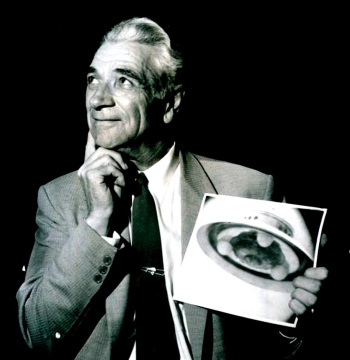
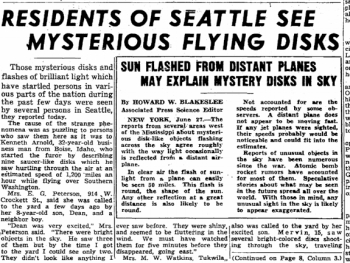
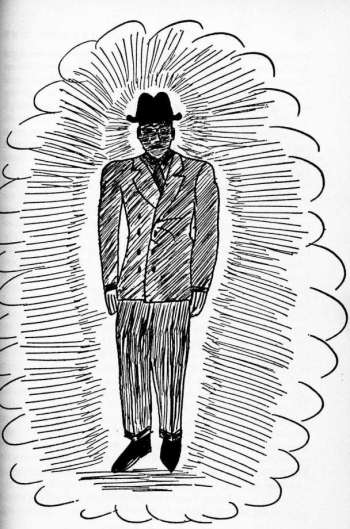





Pingback: American Monoliths: Local Pride and Global Anxiety in ‘The Georgia Guidestones’